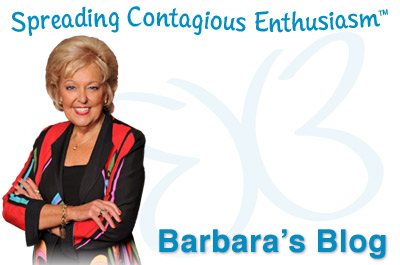FOUR THINGS ALL CUSTOMERS WANT
A study first done by British Airways in 1973 has been replicated many times since, and always we find that there are four things all customers want:
FRIENDLY, CARING SERVICE – “Friendly” is to have a smile and to thank a customer and that is good; however, “caring” means to connect with someone as a human being , to really see them as a person and not “just another customer.” I had an experience in the Atlanta Airport today demonstrating this. I stopped into one of the airport bookstores and asked for the book, “The Schack.” Instead of just pointing me in a direction, the young man walked over with me and found the book. Then, as I was checking out, the lovely person at the cash register asked if there was anything else I needed. I just happened to remember that my son-in-law had called and told me that my little grandson, Owen, had a small airplane that lit up and made noise, and it had fallen out of the car and had gotten run over, so would I try to find another one in the airport. When I asked her if they had them, she said, “Just wait here a minute -I think we have some in the back of the store.” She soon returned with two-a Delta jet and a model of Airforce One. Then she said, “I think you should get Airforce One for him since it will teach him something about history.” Then, as she rang it up, she said, “That little guy is a mighty lucky grandson!” That is caring customer service!
FLEXIBILITY-All customers want us to “jiggle the system” for them. When I am speaking on service, I ask my audiences, “How many of you bend the rules for your customers?” Unfortunately, very few hands go up. Then I go on to explain this concept to them. Customers, us included, do not care how much you have done for anyone else. They only want to know what you will do for them. Organizations that have rigid rules will never be customer-focused for this reason. However, there are different kinds of rules in every organization – Red rules and Blue rules. Red rules are laws, and we must follow those. But every other rule in an organization is a blue rule, a policy or procedure that someone decided at some time was a good idea, and these can all be “bent..” The important task for a company is to begin looking at all their policies and procedures because in many organizations, the blue rules have become red! And even more importantly, if they are constantly bending the same rules for customers, then if they are truly going to be customer-focused, those rules need to be changed. How many times have you been upset by a “dumb” rule that an employee is unwilling (or unable) to bend?
PROBLEM SOLVING – Customers want their problems solved AND they want it done by the FIRST PERSON they talk to. They do not want to be transferred or to have to talk to a supervisor or manager, so it becomes important for organizations to empower their employees to do whatever it takes to solve the customer’s problem. Interestingly, it may not even be a problem associated with the company, but it may simply be a flat tire in the parking lot!
RECOVERY -When you goof up, (and as long as you have human beings working for you, that will happen), it is critically important to recover from that mistake as soon as possible (within 72 hours is most effective) and then to think of some creative ways to “atone” for the goof. There are three steps in this process:
!. Apologize sincerely.
2. Fix it.
3. Do something extra.
What is most amazing about this process is that it should be viewed as an OPPORTUNITY–an opportunity to learn what is really going on as well as an opportunity to create a more loyal customer. Research has shown that if you recover quickly and if you recover in a way that surprises and delights your customer, they will be a more loyal customer than someone who has just had his/her business taken care of. It is powerfully reassuring that even though there will be times that people goof up, if we realize the opportunity for loyalty and learning, we will handle those mistakes in a very different and powerful way. One of the suggestions I have when I consult with organizations on service is to create a standard Recovery Process (a list of things anyone can do for the customer depending on the seriousness of the mistake), so that every employee is empowered to delight a disgruntled customer quickly and creatively.
Now, the challenge for each of you readers is to think about your own experience as a customer. Are these the four things YOU want as a customer? When has an organization recovered with you in a way that “knocked your socks off?” Are you a loyal customer as a result?
To learn more about Barbara’s work in customer service, go to www.barbaraglanz.com/programs.


